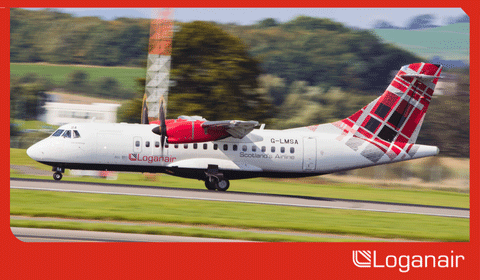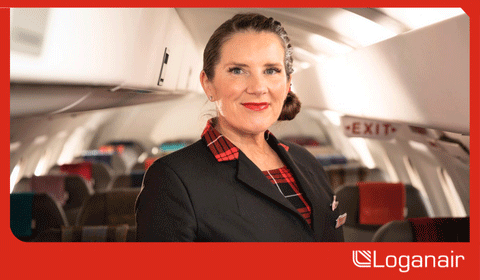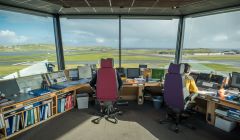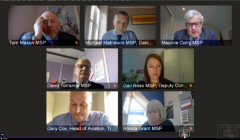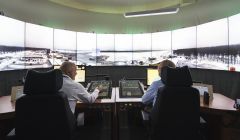Letters / Evidence fails to stand up to scrutiny
On 17 February HIAL were called before the Scottish Government public petitions committee to give evidence on Petition PE1804: Halt Highlands & Islands Airports Ltd’s Air Traffic Management Strategy.
As one of the sponsors of the petition and having worked as an air traffic assistant and flight information service officer at Kirkwall airport for 18 years, I would like to respond to what HIAL said.
The public petitions committee meeting was shown live on Scottish Parliament TV so I watched to see what HIAL had to say. Sadly, while long on words it was short on substance.
HIAL made their long standing claim that the Air Traffic Management Strategy is the only solution to their perceived problems of recruitment and retention, ageing models of air traffic control and future changes in legislation. They also claimed it will improve safety.
HIAL’s defence of their chosen strategy has been rebutted in evidence submitted to the petitions committee by the petitioners. All submissions made to the petitions committee are available in the below link:
https://www.parliament.scot/GettingInvolved/Petitions/airservices
As there were three HIAL management staff at the meeting I will deal with their performances one by one.
First, the HIAL managing director.
Inglis Lyon spoke a lot about consulting with staff and communities but then made it clear that – take it or leave it – his chosen solution is the only one on offer.
Questions on the added cost to the project of primary radar, which HIAL publicly acknowledge on their website as necessary to meet legislation, were dodged. He instead claimed that the cheaper option of airborne surveillance would be acceptable to the CAA at some time in the future.
I would like to point out that primary radar was originally discounted as being prohibitively expensive, so was not included in the original project costs. Neither does it seem to be included in the current estimates.
Become a member of Shetland News
He discounted the suggestion that ‘Radar in the Tower’, (where one air traffic controller combines radar control of aircraft in flight with aerodrome control), could be used as a way of keeping air traffic staff at their current locations rather than centralising them to Inverness.
‘Radar in the Tower’ was dismissed in the Helios consultancy report for HIAL not meeting CAA regulations but is now seen by the CAA as an acceptable concept.
In reply to a question on the islands’ impact assessment report, the HIAL MD acknowledged that he had the final report but hadn’t yet read it, which shows how little importance he attaches to it.
HIAL have long said that the findings of the island’ impact assessment will only be used to try and mitigate the impact of the project on island communities. It will not stop the project. How HIAL intend to mitigate the effects remains to be seen.
The islands’ impact assessment, along with the report into the project by the Scottish Government internal audit and assurance directorate will only be released after they have been seen by the HIAL board.
I will be pleasantly surprised if the public gets to see them before the May elections. Even then I suspect that they will be heavily redacted.
Next, HIAL’s air traffic management (ATM) professional advisor Pat Nolan.
Questions were asked regarding the downgrading of Benbecula and Wick airports from an air traffic control service to a flight information service.
The HIAL ATM professional advisor tried to put a positive spin on the Benbecula downgrade.
Playing to an audience of politicians he used buzz words like ‘Centre of Excellence’ and played up the creation of two new jobs while not mentioning the loss of many more highly paid jobs that are vital to the economic viability of the area.
He also seemed to suggest that the Benbecula community would benefit due to the creation of a training centre. He says HIAL intend to train its own flight information service officers at Benbecula and this may well happen.
As to his suggestion that the Benbecula training centre could be used to train for flight information service officers for the many other UK airports, this is highly unlikely.
The first reason to cause doubt is that HIAL is wholly funded by the Scottish Government. Going into direct competition with privately funded companies may cause HIAL to fall foul of the Competition Act 1998.
The second reason for doubt is financial. Most airports using a flight information service are based in England. Global ATS are a long established private firm providing a wide variety of aviation training including flight information service officer training.
They provide a three-week course that costs £3,900 per week plus VAT with self-catering accommodation starting at £210 a week plus VAT. They are based in Gloucestershire, which is easier and cheaper to travel to than Benbecula.
Furthermore, flight information service officer training can actually be done on a self-study basis, so attending a course is not compulsory. Given that training budgets are always under pressure, most airports will take the cheapest option available to them.
As to FISO and meteorological competency checks, these are done at the airport where the individual being assessed is based so will not increase visitor numbers in Benbecula, as was suggested.
Regarding Wick airport, again the economic impact on the area of removing well paid air traffic control jobs and replacing them with lesser paid jobs was glossed over.
Finally, HIAL’s chief operating officer Gary Cobb.
When questioned on communications links, which are vital to the project, he stated that the CAA normally require three separate links between each airport and the Remote Tower Centre in Inverness.
He expressed confidence that HIAL can achieve those links within budget.
This is somewhat different to what he said at a virtual meeting organised by Angus MacNeil MP on 9 February. I attended that meeting along with my fellow petitioners, the HIAL MD, two CAA representatives and a representative of the Prospect union.
At that meeting the HIAL chief operating officer said he was confident of two communication links per airport, with three a possibility but work was still ongoing. No costing was available.
The CAA were asked to explain their minimum requirements and stated that while two separate links are the minimum, if one fails the other is used to close the airport.
They strongly advised that as HIAL operate “Safety of Life” airports they should have more communications links than the minimum of two.
Given that the connectivity review commissioned by HIAL to investigate communications links only looked at two links per airport and most of these were not separate as they shared a common exchange, I remain unconvinced that HIAL can achieve the necessary three links per airport without incurring significant extra costs.
I also wonder if it is possible at all to find three truly separate links. See the links below for the reasons why.
https://forums.thinkbroadband.com/fibre/4655517-fttp-outage-dt-flooding.html?vc=1
https://www.shetnews.co.uk/2015/07/25/blackout-shuts-airport-and-disrupts-emergency-services/
https://www.shetlandtimes.co.uk/2018/08/17/communications-failure-is-due-to-work-on-subsea-cable
HIAL’s chief operating officer and the HIAL MD were questioned on whether downgrading Benbecula and Wick from ATC to flight information would affect the ability of those airports to deal with several aircraft simultaneously, as is currently possible.
The HIAL MD said that the intention is that there will be no effect and he then went on to mention that some flight information service airports in England deal with 30,000 flights a year. This is a misleading comparison as those airports have no instrument approach procedures and only cater for non-commercial aircraft operating under visual flight rules where pilots have to fly with visual reference to the ground.
HIAL flight information airports have a CAA dispensation that allows commercial passenger carrying flights to fly instrument approach procedures to land at the airports.
These procedures are normally only allowed at ATC airports. These procedures allow pilots to fly at night and in bad weather with reference to aircraft instruments rather than having to rely on being able to see the ground at all times.
It is HIAL’s intention to prevent aircraft from arriving at flight information airports simultaneously by providing them with slot times so they are kept apart by time.
The HIAL chief operating officer, who previously worked at Gatwick, a major international airport, sought to justify HIAL’s proposed use of slot times by saying they are used with great success at all of the major UK airports and that the use of slot times at Benbecula and Wick would have no effect on their flights. This is an absurd argument.
Major UK international airports are fully equipped with Air Traffic Control, radar, and instrument landing systems that allow aircraft autoland systems to be used. The aircraft that use major UK international airports are equipped with autoland systems that allow them to land in thick fog.
All HIAL airports experience bad weather regularly. This severely restricts aircraft operations. Benbecula and Wick have no instrument landing systems so even if the aircraft using these airports did have autoland systems they couldn’t use them.
Delays caused by poor weather result in several aircraft trying to take advantage of short weather windows. This means that aircraft will want to arrive simultaneously. Slot times mean fewer aircraft can take advantage of these short breaks in the weather.
At the meeting with Angus MacNeil, MP, the HIAL Chief Operating Officer conceded after pointed questioning that the removal of Air Traffic Control will result in passenger flights being cancelled or delayed. This contradicts his evidence given to the Petitions Committee.
All in all I felt that HIAL were unconvincing, disingenuous and their evidence once again failed to stand up to scrutiny.
I have said in the past that if I were a private investor and HIAL were pitching to me to back their project financially I would walk away.
Unfortunately, as taxpayers it is highly likely that my money and yours will be used to support HIAL’s money pit of a project.
HIAL’s managing director says that the project is “on time and on budget”. This is only because no contracts have yet been signed and no work has yet begun.
Peter Henderson
Orkney
Become a member of Shetland News
Shetland News is asking its readers to consider paying for membership to get additional perks:
- Removal of third-party ads;
- Bookmark posts to read later;
- Exclusive curated weekly newsletter;
- Hide membership messages;
- Comments open for discussion.
If you appreciate what we do and feel strongly about impartial local journalism, then please become a member of Shetland News by either making a single payment, or setting up a monthly, quarterly or yearly subscription.










